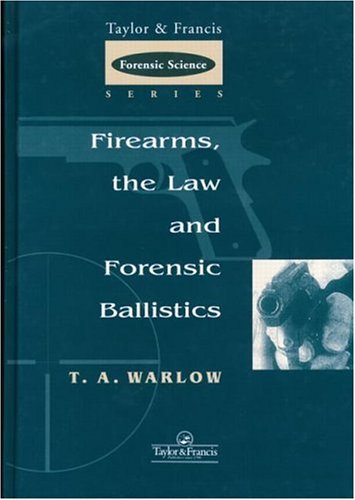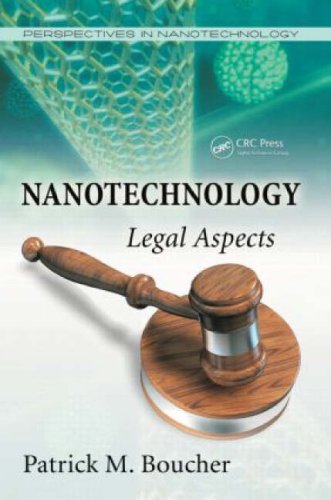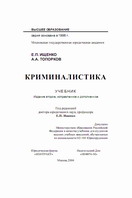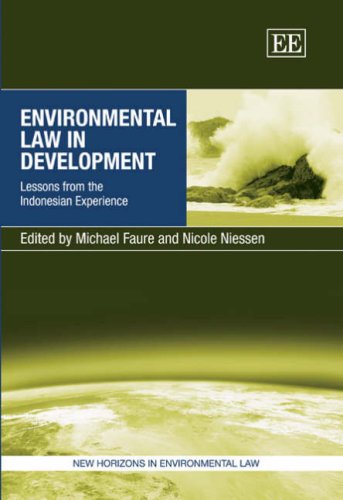Tom Warlow, T A Warlow9780748404322, 0748404325, 0748405658, 0748405674, 0748405801
Table of contents :
tf2027_fm.pdf……Page 1
Forensic Examination of Glass and Paint Analysis and Interpretation……Page 3
Contents……Page 5
List of contributors……Page 9
Preface……Page 11
1.1.2 Forensic science and criminalistics……Page 12
Table of Content……Page 0
1.2 Concepts and the production of physical evidence……Page 13
1.3 Uses of trace evidence……Page 14
1.5.1 Introduction……Page 15
1.5.3 Evidence consisting of contactless transfers of material……Page 16
1.5.6 Pattern evidence from contactless transfers of material……Page 17
1.6 Associations based on physical pattern evidence……Page 18
1.6.4 Fracture and physical matches……Page 19
1.7.1 Comparison of materials using morphological criteria……Page 20
1.7.4 Comparison of materials using refined compositional analyses……Page 21
1.8 The role of trace evidence databases……Page 23
1.9 Complementary nature of trace evidence and DNA typing……Page 24
1.10 Recognition and interpretation of trace evidence……Page 25
1.11.1 Hair evidence……Page 26
1.12 Glass evidence……Page 28
1.13 Paint evidence……Page 30
1.14 Miscellaneous types of trace evidence……Page 31
1.15 Future technology and trace evidence……Page 32
1.16 Summary and conclusions……Page 34
1.17 References……Page 35
2.2 Definition of a glass……Page 37
2.4 Glass-manufacturing process……Page 38
2.4.3 Refining and homogenising……Page 39
2.5.1 Glass blowing……Page 40
2.5.3.1 The float glass process……Page 41
2.5.3.2 The rolled glass process……Page 42
2.5.4.2 Glass wool process……Page 43
2.5.7 Glass-tubing manufacture……Page 44
2.5.10 Pressed glassware……Page 45
2.6.2 Coating……Page 46
2.6.4 Decorating……Page 47
2.7.3 Borate silicate glasses……Page 48
2.7.5 Aluminosilicate glasses……Page 49
2.7.9 Chalcogenide glasses……Page 50
2.8 References……Page 56
3.1 Introduction……Page 57
3.2 Recovery……Page 59
3.3 Surface examination……Page 60
3.4 Surface luminescence……Page 61
3.5 Surface contour……Page 63
3.6 Refractive index measurement……Page 66
3.8 Comparison of glass fragments……Page 72
3.10 References……Page 73
4.1 Introduction……Page 75
4.2 Forensic and analytical implications of the composition of glass……Page 76
4.3 Atomic spectroscopy……Page 79
4.4 X-ray methods……Page 84
4.5 Radiochemical methods……Page 87
4.6 Inorganic mass spectrometry……Page 88
4.7 Conclusions……Page 90
4.8 References……Page 91
5.1 Introduction……Page 94
Example 1……Page 95
Example 2……Page 96
Example 3……Page 97
5.5.2 Probability……Page 98
Denominator……Page 99
Numerator……Page 100
Example 5……Page 101
5.7 Elemental analysis……Page 102
5.9 References……Page 103
6.1 Glass as physical evidence……Page 105
6.3.1 Significance of physical matches……Page 106
6.3.2 Demonstration of continuity of ream or cord……Page 107
6.4 Fractures in flat glass……Page 108
6.4.2 Failure upon tension……Page 109
6.4.2.4 Conchoidal marks……Page 111
6.4.3 Failure by Hertzian fracture……Page 114
6.4.4 Propagation of mechanical waves……Page 115
6.5.1 Fractures in container glass……Page 116
6.5.1.1 Internal pressure……Page 117
6.5.1.3 Impact fracture……Page 118
6.5.3.1 Laminated safety glass……Page 119
6.6 Glass fractures produced by firearms……Page 120
6.6.1 Sequence of gunshots……Page 121
6.8 Glass in fires……Page 122
6.9 Retention and persistence of glass fragments in clothing……Page 124
6.10 Future directions for the physical examination of glass evidence……Page 126
6.11 References……Page 127
7.1 Introduction……Page 130
7.4 Paint systems……Page 131
7.5 Formulating principles……Page 132
7.6 Pigments and extenders……Page 134
7.7 Paint manufacture……Page 136
7.8.1 Basic polymer systems……Page 139
7.8.2 Crosslinking systems……Page 143
7.9 Decorative paints……Page 145
7.10 Automotive and refinishing systems……Page 146
7.11 References……Page 148
8.1 Ways in which colour can be described……Page 149
8.1.1 Colour space and the use of tristimulus values and chromaticity coordinates……Page 151
8.1.2 The CIELAB colour space and colour differences……Page 155
8.1.3 Instrumentation for colour measurement……Page 158
8.2.1 Embedding technique……Page 160
8.2.2 Microtome sectioning……Page 161
8.4 Microspectrophotometry……Page 162
8.5 References……Page 168
9.1 Introduction……Page 170
9.2.1 Modes of pyrolysis……Page 171
9.2.2 Gas chromatography……Page 172
9.2.4 Detection systems……Page 173
9.2.6 Applications……Page 174
9.2.6.1 Architectural paint……Page 176
9.2.6.2 Automotive paint……Page 178
9.2.6.3 Motor vehicle body fillers……Page 180
9.2.6.4 Industrial paints……Page 181
9.3 Pyrolysis mechanisms……Page 182
9.4 Pyrolysis mass spectrometry……Page 183
9.6 Advantages and disadvantages of pyrolysis gas chromatography……Page 184
9.8 References……Page 185
10.2 Infrared spectroscopy……Page 188
10.3.1.1 Infrared source……Page 190
10.3.1.3 Detector……Page 191
10.3.2 FTIR instruments……Page 192
10.3.2.5 Detectors……Page 193
10.3.2.7 The FTIR microscope……Page 195
10.4 Preparation of samples for analysis……Page 197
10.4.1.1 Layer separation……Page 198
10.4.1.2.1 Diamond cell……Page 199
10.4.1.2.2 KBr pellets……Page 200
10.4.2 Infrared reflectance spectra (no microscope accessory)……Page 201
10.4.4.1 Sample preparation for transmission spectra……Page 203
10.4.4.2 Sample preparation for reflectance spectra……Page 204
10.5 Infrared analysis of paint……Page 205
10.5.2 Structural formulae and Infrared spectra of some commonly encountered paint resins and pigments……Page 206
10.5.2.1 Alkyd resins……Page 207
10.5.2.3 Acrylic resin……Page 208
10.5.2.4 Epoxy resins……Page 209
10.5.2.5 Polyurethane resins……Page 210
10.5.2.7 Vinyl resins……Page 211
10.5.2.8 Inorganic pigments……Page 213
10.6 Interpretation of IR spectra of non-automotive (domestic) paints……Page 214
10.6.1 Unknown paint sample #1……Page 216
10.6.3 Unknown paint sample #3……Page 219
10.6.5 Reflective traffic paint……Page 221
10.6.7 Heavily pigmented paint……Page 223
10.6.7.1 Marine antifouling paint……Page 224
10.7 Identification of automotive paints by interpretation of their infrared spectra……Page 225
10.7.1.2 Infrared analysis……Page 226
10.7.2 Characteristic peaks in infrared spectra of automotive paint……Page 227
10.7.2.1 Coding of infrared spectra of a four-layer paint chip from a 1995 Ford vehicle……Page 228
10.7.3.1 A visual database……Page 230
10.7.3.2 Computerised database: automotive paint database and search software – the paint data query (PDQ) system……Page 232
Data entry……Page 233
Data query……Page 235
10.8 Application of infrared spectroscopy in comparison of paint fragments……Page 238
10.9 References……Page 245
Appendix 1: Instrumental conditions……Page 246
11.1.1 Forensic considerations……Page 247
11.1.2 Elemental analysis of paints and coatings……Page 248
11.2 Pigments and extenders……Page 249
11.3 History of scanning electron microscopy/energy dispersive X-ray spectrometry (SEM/EDS)……Page 252
11.4.1 Basic operation of a scanning electron microscope……Page 253
11.4.2 Electron beam–sample interactions……Page 255
11.4.3.1 Backscatter detectors……Page 256
11.5 Theoretical principles of energy dispersive X-ray spectrometry (EDS)……Page 259
11.6.1 Embedding and polishing……Page 262
11.6.2 Unembedded cross-sections……Page 263
11.6.4 Thin peels……Page 264
11.6.6 Coating materials……Page 265
11.7.1 Collection parameters……Page 266
11.7.2 Peak identification……Page 267
11.7.2.2 False peaks……Page 268
11.7.4 Comparison of quantitative results……Page 269
11.7.5 Component identification……Page 271
11.8.1 X-ray fluorescence spectrometry……Page 272
11.8.2 Wavelength dispersive X-ray analysis (WDX)……Page 273
11.9 Discrimination……Page 274
11.12 References……Page 275
12.1 Introduction……Page 277
12.2.1 Wet paint……Page 278
12.2.3 Persistence and secondary transfer……Page 279
12.3 Household paints……Page 280
12.4 Vehicle paint……Page 282
12.5.1 Single layer of paint transferred from suspect vehicle to injured party’s vehicle……Page 285
12.5.2 Single layer of paint transferred from injured party to suspect vehicle……Page 287
12.5.4 Transfer of multilayer manufacturer’s finish from suspect vehicle to injured party……Page 288
12.5.6 Exchange of multilayer manufacturer’s finish……Page 289
12.7 References……Page 290







Reviews
There are no reviews yet.